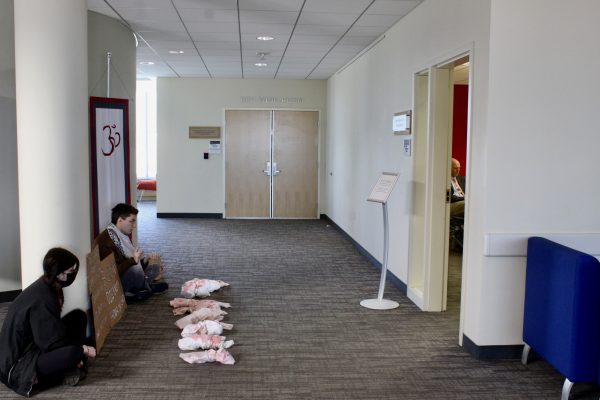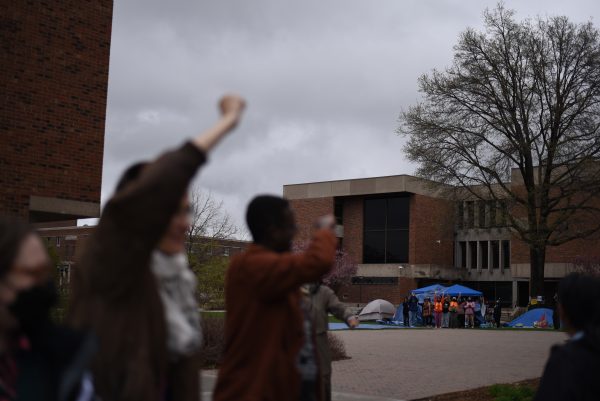Chimps that would be humans
Documentary connects common read to real life.
October 15, 2015
This year’s common read focuses on what exactly makes us human; what it is that separates us from animals. Karen Joy Fowler’s “We Are All Completely Beside Ourselves” does so by exploring the relationship between the protagonist and the chimp that was raised along side of her. The chimp, named Fern, was meant to be taught to communicate through sign language. While this makes for an interesting book for the freshman class to read and discuss, it also closely mirrors actual experiments that took place within the twentieth century. Making connections between the book and the real life trials was the purpose of a common read event that took place on October 8.
Students were invited to Kay Fredericks Room for a viewing of the film “Project: Nim.” This 2011 documentary tells the story of Nim Chimpsky, a chimpanzee that was taken from its mother at only a few weeks old to live among humans. It would be raised as a human child and would learn american sign language in attempts to discover if animals could communicate as humans do. The documentary showed testimonials from various people involved in Nim’s life from when he was brought to New York in 1973 to the time of his death in 2000. It covered the various aspects of the initial experiment and the events that followed when he was taken away to be treated as any chimpanzee in a research institute.
Although some of the events can be difficult to watch, it helped those who attended to connect the content of “We Are All Completely Beside Ourselves” to real life experiences. “I think it helps to have the actual movie clips and this is actually what happened and it’s not just words on a page,” said Kylie Russell, a freshman who attended the viewing. Other students agree that it was interesting to see an example of something that occurred within real life that they had only ever read about.
Nim, who is mentioned briefly within the book, managed to learn around 125 signs. However, this was ultimately considered a disappointment in the sense that he could not communicate in the way the scientists had hoped. “[It’s] interesting that Herb [the lead scientist] talks about finding the conclusion being that chimps can’t communicate. In the book, it was more that they learned and interacting with owners,” said freshman Courtney Kuhl. This contrast will hopefully lead to more discussion among the freshmen class.
This film has allowed anyone who attended to see another aspect of the experiment talked about in Fowler’s book. It will hopefully spawn more discussion about what makes one human or chimp and how these trials should be viewed– as a success or failure? As Fowler says within her book, “It was always her failure for not being able to talk to us, never ours for not being able to understand her. (202)” Maybe there is more that can be learned from Nim and Fern, and this event only opened the door for more communication.





